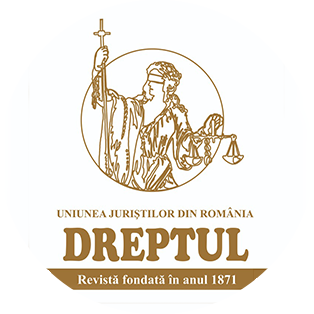-
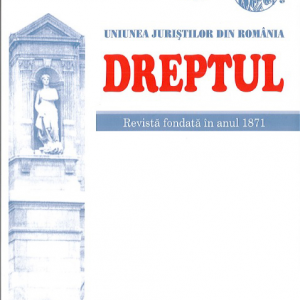 The article proposes a sensitive topic in the Romanian criminal procedure, namely to determine the extent to which the cases of absolute nullity are limitatively provided by the Criminal Procedure Code (Article 281 of the Criminal Procedure Code) or whether there are cases of nullity of the processual or procedural documents which, although not included in the enumeration of Article 281 of the Criminal Procedure Code, are, however, veritable cases of absolute nullity. The problem is all the more delicate since the national doctrine is situated, up to this moment, in the comfort zone in which the cases of absolute nullity are equated to those of express nullity and those of relative nullity to those of virtual nullity. I have shown, with examples from the practice, but also from the doctrine (too timid so far), that there are situations of virtual absolute nullity of the criminal processual acts not even listed in the content of Article 281 of the Criminal Procedure Code, as well as the situations in which they may become incidental.
The article proposes a sensitive topic in the Romanian criminal procedure, namely to determine the extent to which the cases of absolute nullity are limitatively provided by the Criminal Procedure Code (Article 281 of the Criminal Procedure Code) or whether there are cases of nullity of the processual or procedural documents which, although not included in the enumeration of Article 281 of the Criminal Procedure Code, are, however, veritable cases of absolute nullity. The problem is all the more delicate since the national doctrine is situated, up to this moment, in the comfort zone in which the cases of absolute nullity are equated to those of express nullity and those of relative nullity to those of virtual nullity. I have shown, with examples from the practice, but also from the doctrine (too timid so far), that there are situations of virtual absolute nullity of the criminal processual acts not even listed in the content of Article 281 of the Criminal Procedure Code, as well as the situations in which they may become incidental. -
 The direct action in the guarantee for hidden vices is still a new subject in the legal doctrine and especially in the Romanian judicial practice. At present, judicial practice has not committed such an action, although the issue has been debated, both in the doctrine of the old Civil Code, and especially in the doctrine of the new Civil Code. What is even more surprising is that the legislator understood to directly regulate such direct action in the case of the guarantee for eviction, without regulating it in the case of the cover for hidden vices. If technical and legal issues seem relatively simple in the case of direct action for hidden vices against a previous vendor or first seller, things get complicated when it comes to direct action in hidden vices against the contractor. The present study aims to identify the legal nature and the basis of the direct action in the guarantee for hidden vices against the contractor, thus establishing its admissibility criteria. By the arguments that we will render, we hope to contribute to the shaping of some defining elements of direct action that will facilitate its practical application.
The direct action in the guarantee for hidden vices is still a new subject in the legal doctrine and especially in the Romanian judicial practice. At present, judicial practice has not committed such an action, although the issue has been debated, both in the doctrine of the old Civil Code, and especially in the doctrine of the new Civil Code. What is even more surprising is that the legislator understood to directly regulate such direct action in the case of the guarantee for eviction, without regulating it in the case of the cover for hidden vices. If technical and legal issues seem relatively simple in the case of direct action for hidden vices against a previous vendor or first seller, things get complicated when it comes to direct action in hidden vices against the contractor. The present study aims to identify the legal nature and the basis of the direct action in the guarantee for hidden vices against the contractor, thus establishing its admissibility criteria. By the arguments that we will render, we hope to contribute to the shaping of some defining elements of direct action that will facilitate its practical application. -
 The recent Administrative Code (approved by the Government Emergency Ordinance No 57/2019) has taken over from the old regulation (the Law on local public administration No 215/2001), with some amendments, the rules regarding the function of public administrator at the level of communes, cities, municipalities, counties and associations of inter-community development. In this article, the author mainly considers the appointment of the public administrator by the mayor, the delegation of his attributions, including that of the main loan officer. Special attention is paid to the management contract (its object, the rights and obligations of the contracting parties, its duration and its cessation). Regarding the legal nature of the respective contract, the author’s opinion is that this is an administrative contract, of public law. Among the arguments considered the following are included: it is regulated by the Administrative Code; one of the parties is a public authority; its object consists in „coordinating some compartments of the specialized apparatus or of the public services”; it can be terminated (unilaterally) by the public authority. The end of the article is devoted to the triptych at the level of communes, cities and municipality, triptych consisting of the mayor, the deputy mayor and the public administrator. The idea is that the delegation of some of the attributions to the public administrator does not remove the competence of the mayor to exercise any attributions given by law in his competence.
The recent Administrative Code (approved by the Government Emergency Ordinance No 57/2019) has taken over from the old regulation (the Law on local public administration No 215/2001), with some amendments, the rules regarding the function of public administrator at the level of communes, cities, municipalities, counties and associations of inter-community development. In this article, the author mainly considers the appointment of the public administrator by the mayor, the delegation of his attributions, including that of the main loan officer. Special attention is paid to the management contract (its object, the rights and obligations of the contracting parties, its duration and its cessation). Regarding the legal nature of the respective contract, the author’s opinion is that this is an administrative contract, of public law. Among the arguments considered the following are included: it is regulated by the Administrative Code; one of the parties is a public authority; its object consists in „coordinating some compartments of the specialized apparatus or of the public services”; it can be terminated (unilaterally) by the public authority. The end of the article is devoted to the triptych at the level of communes, cities and municipality, triptych consisting of the mayor, the deputy mayor and the public administrator. The idea is that the delegation of some of the attributions to the public administrator does not remove the competence of the mayor to exercise any attributions given by law in his competence. -
 The administration of evidence necessarily implies that the evidence is first proposed and produced (submitted) by the parties and then approved by the court. The legislator of the Civil Procedure Code instituted a regime of evidence renewed in its spirit and in its formal expression, devoting, in addition to the general provisions on the administration of evidence (Articles 260–263 of the Civil Procedure Code), also some provisions specific to the administration of evidence by written documents (Articles 292–300 of the Civil Procedure Code), as well as to the conduct of the procedures for verification of documents (Articles 301–308 of the Civil Procedure Code). As a rule, the production (submission) of the documents takes place voluntarily, under the terms and conditions set by law. However, in some cases, the documents relating to the pending trial are not produced voluntarily, whereas their presentation in court could have consequences for those who hold them or for their spouse, kin or relatives. The attitude of the person who holds the document not to produce it voluntarily may have different motives: family secret, business secret, confidentiality, strictly personal matters about the dignity or private life of a person, etc. In other cases, bringing written documents to court would be too expensive or the documents would be too voluminous or numerous. In such cases, the justice of the dialogue will prevail. From the correlation of the provisions of the final sentence of Article 22 (2) with those of Article 254 (2), Article 254 (5) of the Civil Procedure Code, it appears that the legislator draws attention to the cooperation which must exist between the judge and the parties, as regards the evidence of facts, without thereby understanding that the judge substitutes the parties, automatically filling the passivity of the party either a claimant, or a defendant
The administration of evidence necessarily implies that the evidence is first proposed and produced (submitted) by the parties and then approved by the court. The legislator of the Civil Procedure Code instituted a regime of evidence renewed in its spirit and in its formal expression, devoting, in addition to the general provisions on the administration of evidence (Articles 260–263 of the Civil Procedure Code), also some provisions specific to the administration of evidence by written documents (Articles 292–300 of the Civil Procedure Code), as well as to the conduct of the procedures for verification of documents (Articles 301–308 of the Civil Procedure Code). As a rule, the production (submission) of the documents takes place voluntarily, under the terms and conditions set by law. However, in some cases, the documents relating to the pending trial are not produced voluntarily, whereas their presentation in court could have consequences for those who hold them or for their spouse, kin or relatives. The attitude of the person who holds the document not to produce it voluntarily may have different motives: family secret, business secret, confidentiality, strictly personal matters about the dignity or private life of a person, etc. In other cases, bringing written documents to court would be too expensive or the documents would be too voluminous or numerous. In such cases, the justice of the dialogue will prevail. From the correlation of the provisions of the final sentence of Article 22 (2) with those of Article 254 (2), Article 254 (5) of the Civil Procedure Code, it appears that the legislator draws attention to the cooperation which must exist between the judge and the parties, as regards the evidence of facts, without thereby understanding that the judge substitutes the parties, automatically filling the passivity of the party either a claimant, or a defendant -
 In this article, the author analyzes the legal nature of the parliamentary committees and concludes, together with other authors, that they should be considered as internal working bodies of each Legislative Chamber. The role of parliamentary committees, whether standing committees or committees of inquiry, or other special committees, is to prepare the works which are going to be debated in the plenum of the Legislative Assemblies. As working bodies, the parliamentary committees do not have their own decision-making power over the matter referred to them. In other words, the parliamentary committees do not express a political will, in a deliberative sense, because their role is to examine the matters referred to them by the standing bureaux of the Legislative Chambers and to make proposals thereto. The reports and opinions they make on the matters under examination have the value of recommendation made to the plenum of each Legislative Chamber, these being free – as deliberative bodies – to accept or reject the solutions proposed by the committees. Each Chamber of Parliament has the full freedom to set up specialized committees in certain areas of activity. The Constitution obliges the Legislative Chambers to set up permanent committees and to set up – when it deems necessary – committees of inquiry or other special committees. The composition of the parliamentary committees reflects, as far as possible, the political configuration of the Chamber that has decided to set them up.
In this article, the author analyzes the legal nature of the parliamentary committees and concludes, together with other authors, that they should be considered as internal working bodies of each Legislative Chamber. The role of parliamentary committees, whether standing committees or committees of inquiry, or other special committees, is to prepare the works which are going to be debated in the plenum of the Legislative Assemblies. As working bodies, the parliamentary committees do not have their own decision-making power over the matter referred to them. In other words, the parliamentary committees do not express a political will, in a deliberative sense, because their role is to examine the matters referred to them by the standing bureaux of the Legislative Chambers and to make proposals thereto. The reports and opinions they make on the matters under examination have the value of recommendation made to the plenum of each Legislative Chamber, these being free – as deliberative bodies – to accept or reject the solutions proposed by the committees. Each Chamber of Parliament has the full freedom to set up specialized committees in certain areas of activity. The Constitution obliges the Legislative Chambers to set up permanent committees and to set up – when it deems necessary – committees of inquiry or other special committees. The composition of the parliamentary committees reflects, as far as possible, the political configuration of the Chamber that has decided to set them up. -
 In this article the author analyses who can have active and passive quality in administrative contentious disputes according to the provisions of Law No 554/2004 of administrative contentious, as amended by Law No 212/2018 for amending and completing the Law on administrative contentious No 554/2004 and other normative acts. The article highlights the correlations existing between the Law of administrative contentious, the Civil Code and the Civil Procedure Code in the subject matter. The article provides solutions to many practical problems.
In this article the author analyses who can have active and passive quality in administrative contentious disputes according to the provisions of Law No 554/2004 of administrative contentious, as amended by Law No 212/2018 for amending and completing the Law on administrative contentious No 554/2004 and other normative acts. The article highlights the correlations existing between the Law of administrative contentious, the Civil Code and the Civil Procedure Code in the subject matter. The article provides solutions to many practical problems. -
 The authentic document is the document drawn up or, as the case may be, received and authenticated by a public authority, by the notary public or by another person invested by the state with public authority. Likewise, any other document issued by a public authority and to which the law confers this character is authentic. In other words, in order to be qualified as „authenticated document”, a document must meet the following requirements: a) be drawn up or, where appropriate, received and authenticated by a public authority, a notary public or by another person invested by the state with public authority; b) the instrumenting agent must be competent from material and territorial point of view to instrument the document; c) to be drawn up in compliance with the formalities required by law or, as the legislator specifies, „in the form and under the conditions established by law”. The legislator devotes the field of authenticity to the document, specifying the elements which relate to authenticity, namely: establishing the identity of the parties; expressing their consent about their content; the signature of the parties and the date of the document [Article 269 (1) second sentence of the Civil Procedure Code, Article 90 (2) of the Law No 36/1995]. The signature of the public servant confers authenticity to the document on which it is given. It follows that it falls into the field of authenticity what the instrumenting agent finds ex propriis sensibus. The document which by its form and appearance (the signature of the public notary or the public servant, the seal of the authority, the registration number, etc.) has the aspect of an authentic document drawn up regularly enjoys the presumption of authenticity and validity, and the contesting party can only fight against it by means of the procedure of registration of forgery.
The authentic document is the document drawn up or, as the case may be, received and authenticated by a public authority, by the notary public or by another person invested by the state with public authority. Likewise, any other document issued by a public authority and to which the law confers this character is authentic. In other words, in order to be qualified as „authenticated document”, a document must meet the following requirements: a) be drawn up or, where appropriate, received and authenticated by a public authority, a notary public or by another person invested by the state with public authority; b) the instrumenting agent must be competent from material and territorial point of view to instrument the document; c) to be drawn up in compliance with the formalities required by law or, as the legislator specifies, „in the form and under the conditions established by law”. The legislator devotes the field of authenticity to the document, specifying the elements which relate to authenticity, namely: establishing the identity of the parties; expressing their consent about their content; the signature of the parties and the date of the document [Article 269 (1) second sentence of the Civil Procedure Code, Article 90 (2) of the Law No 36/1995]. The signature of the public servant confers authenticity to the document on which it is given. It follows that it falls into the field of authenticity what the instrumenting agent finds ex propriis sensibus. The document which by its form and appearance (the signature of the public notary or the public servant, the seal of the authority, the registration number, etc.) has the aspect of an authentic document drawn up regularly enjoys the presumption of authenticity and validity, and the contesting party can only fight against it by means of the procedure of registration of forgery. -
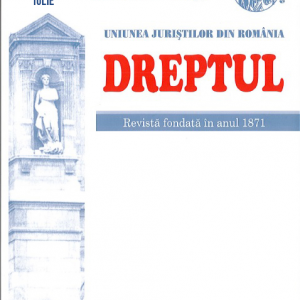 The consent of the patient is a legal consent and therefore it has to comply with all the validity conditions thereof. Among these, the condition of the capacity of exercise of the minor patient benefits from a special regulation by Article 661, the 2nd sentence of the Law No 95/2006. The present study intends to analyze these special provisions, by corroborating them with the regulations applicable to the legal representatives of the minor and by reference to the common law in the matter of capacity of exercise, for the purpose of accomplishing the finality of the legal provisions (protected access to the medical service) and of avoiding some blockage situations, generated by a bureaucratic interpretation.
The consent of the patient is a legal consent and therefore it has to comply with all the validity conditions thereof. Among these, the condition of the capacity of exercise of the minor patient benefits from a special regulation by Article 661, the 2nd sentence of the Law No 95/2006. The present study intends to analyze these special provisions, by corroborating them with the regulations applicable to the legal representatives of the minor and by reference to the common law in the matter of capacity of exercise, for the purpose of accomplishing the finality of the legal provisions (protected access to the medical service) and of avoiding some blockage situations, generated by a bureaucratic interpretation. -
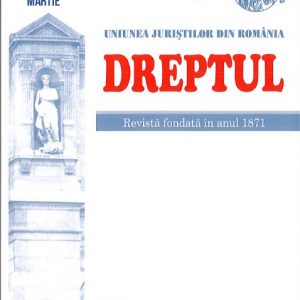 The suspension of the administrative contract is an institution rather newly-introduced in the Romanian law, at the same time with the entry into force of the Law No 101/2016. However, this normative act exclusively regulates the judicial suspension of the administrative contract, which makes room for the following question: Can an administrative contract be suspended only by court decision and only under the conditions established limitatively by the Law No 101/2016 or in other circumstances as well, namely following a procedure other than that established by the aforementioned normative act? We believe that the suspension of an administrative contract may also be reached under conditions other than those established by the provisions of Article 53 (2) of the Law No 101/2016, either by administrative means, by a decision of measures taken by the competent bodies of the Court of Accounts, or as a result of the raising by one of the parties to such a contract, in relation to the other, of an exception for non-performance of the contract, or, finally, as consequence of the suspension of the unilateral administrative act on the basis of which such a contract was concluded, using the rule according to which the legal fate of the original act determines the legal status of the subsequent act. The subject seems to be new in our legal literature and engages extraordinary implications of substantive and procedural law. It is sufficient to mention here that the judicial suspension of the administrative contract enjoys, at the level of the Law No 101/2016, by a superficial regulation, requiring the supplementation by several provisions of the Law on administrative disputes No 554/2004, but also with those pertaining to the current Civil Procedure Code. It is this supplementation that makes it possible to clarify the institution of the judicial suspension of the administrative contract, but in a direction that raises problems which the practitioner not accustomed with the analytical doctrinal discourse could hardly envisage, of a higher depth than that encountered in the marginal comments of the legal provisions incidental in this matter. In other line of ideas, in the context of analyzing the set of prerogatives attributed by the law to the Court of Accounts, it can easily be concluded that an administrative suspension of the administrative contract is perfectly possible, ordered by a unilateral administrative act of an individual nature. Likewise, the administrative contract may end up in the situation to be suspended, as consequence of the legal suspension of the unilateral administrative act, on the basis of which the contract was concluded, an act challenged by the prefect in the exercise of the prerogatives of administrative trusteeship with which he was empowered by law. Both scenarios are binding on the use of the terminological luggage of the Law on administrative disputes No 554/2004. Lastly, the suspension of the administrative contract may be engaged also by the possible raising by any of the parties to an administrative contract, in relation to the other, of an exception of non-performance, which sends the assumed analysis to the ideological set of the civil law.
The suspension of the administrative contract is an institution rather newly-introduced in the Romanian law, at the same time with the entry into force of the Law No 101/2016. However, this normative act exclusively regulates the judicial suspension of the administrative contract, which makes room for the following question: Can an administrative contract be suspended only by court decision and only under the conditions established limitatively by the Law No 101/2016 or in other circumstances as well, namely following a procedure other than that established by the aforementioned normative act? We believe that the suspension of an administrative contract may also be reached under conditions other than those established by the provisions of Article 53 (2) of the Law No 101/2016, either by administrative means, by a decision of measures taken by the competent bodies of the Court of Accounts, or as a result of the raising by one of the parties to such a contract, in relation to the other, of an exception for non-performance of the contract, or, finally, as consequence of the suspension of the unilateral administrative act on the basis of which such a contract was concluded, using the rule according to which the legal fate of the original act determines the legal status of the subsequent act. The subject seems to be new in our legal literature and engages extraordinary implications of substantive and procedural law. It is sufficient to mention here that the judicial suspension of the administrative contract enjoys, at the level of the Law No 101/2016, by a superficial regulation, requiring the supplementation by several provisions of the Law on administrative disputes No 554/2004, but also with those pertaining to the current Civil Procedure Code. It is this supplementation that makes it possible to clarify the institution of the judicial suspension of the administrative contract, but in a direction that raises problems which the practitioner not accustomed with the analytical doctrinal discourse could hardly envisage, of a higher depth than that encountered in the marginal comments of the legal provisions incidental in this matter. In other line of ideas, in the context of analyzing the set of prerogatives attributed by the law to the Court of Accounts, it can easily be concluded that an administrative suspension of the administrative contract is perfectly possible, ordered by a unilateral administrative act of an individual nature. Likewise, the administrative contract may end up in the situation to be suspended, as consequence of the legal suspension of the unilateral administrative act, on the basis of which the contract was concluded, an act challenged by the prefect in the exercise of the prerogatives of administrative trusteeship with which he was empowered by law. Both scenarios are binding on the use of the terminological luggage of the Law on administrative disputes No 554/2004. Lastly, the suspension of the administrative contract may be engaged also by the possible raising by any of the parties to an administrative contract, in relation to the other, of an exception of non-performance, which sends the assumed analysis to the ideological set of the civil law. -
 The purpose of the present analysis is to determine the applicable legal regime to certain procedural acts made in bad faith in relation to the abuse of rights theory, and the lis pendens (same trial pending in the same time before two or more panel of judges) and joined cases institutions. The analysis started from a particular case in which a claimant filed two statements of claim having the same object in two considerably distant moments (7 years between them) against the same defendant. The only aspects which the claimant drafted differently in the second case file, in order to eliminate risk of identity, were the claims’ phrasing and some additional arguments in his favour which were not inserted in a proper form in the first case file. Nevertheless, through the second statement of claim, the claimant himself raised the lis pendens exception, in order to send the second case file in front of the initial judge and thus to overcome his incapacity to invoke additional arguments in the first case file. The court vested with the judgment of the lis pendens exception stated that the exception is applicable and in the case at hand. Thus, it has sent the second file to be analyzed together with the initial statement of claim. In addition to this, the court fined the claimant for misconduct represented by filing intentionally the two statement of claims having the same object. In consequence, in the present article we have analyzed the conditions to be met in order to state the presence of an abuse of rights in the light of the lis pendens and joined cases institutions. We have identified the purpose for the regulation of these legal institutions and the similarities and differences between them. In addition to this, we addressed the conduct which the court should have in order to correctly analyze the two statements of claim which are object of the lis pendens exception. Finally, our theoretical conclusions related to the three institutions were applied to our particular case, in order to prove the presence of an abuse of right.
The purpose of the present analysis is to determine the applicable legal regime to certain procedural acts made in bad faith in relation to the abuse of rights theory, and the lis pendens (same trial pending in the same time before two or more panel of judges) and joined cases institutions. The analysis started from a particular case in which a claimant filed two statements of claim having the same object in two considerably distant moments (7 years between them) against the same defendant. The only aspects which the claimant drafted differently in the second case file, in order to eliminate risk of identity, were the claims’ phrasing and some additional arguments in his favour which were not inserted in a proper form in the first case file. Nevertheless, through the second statement of claim, the claimant himself raised the lis pendens exception, in order to send the second case file in front of the initial judge and thus to overcome his incapacity to invoke additional arguments in the first case file. The court vested with the judgment of the lis pendens exception stated that the exception is applicable and in the case at hand. Thus, it has sent the second file to be analyzed together with the initial statement of claim. In addition to this, the court fined the claimant for misconduct represented by filing intentionally the two statement of claims having the same object. In consequence, in the present article we have analyzed the conditions to be met in order to state the presence of an abuse of rights in the light of the lis pendens and joined cases institutions. We have identified the purpose for the regulation of these legal institutions and the similarities and differences between them. In addition to this, we addressed the conduct which the court should have in order to correctly analyze the two statements of claim which are object of the lis pendens exception. Finally, our theoretical conclusions related to the three institutions were applied to our particular case, in order to prove the presence of an abuse of right. -
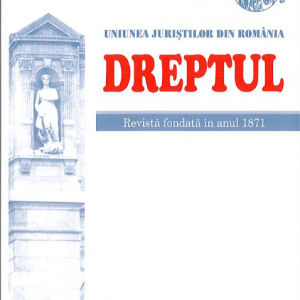 The present study is an analysis of the theoretical and recent judicial practice occasioned by the offences of trafficking in human beings and by proxenetism. His author has quoted relevant opinions from the specialized doctrine, succeeding in creating a complete picture of the two types of offences, and these elements were doubled by invoking some aspects of the judicial practice in the field. Some of the statements invoked in this study are criticized in an argumentative manner. The manner of conceiving the theme reveals its author’s intention to emphasize also those aspects that confer a comparison content of the offences trafficking in persons and trafficking in minors, on the one hand, and proxenetism respectively, on the other hand. In the course of the analysis, aspects related to other forms of exploitation of the person, as defined in the Criminal Code, were tangentially pointed out as well. At the same time, the article also contains some very pertinent de lege ferenda proposals, based on the good knowledge of the analyzed field.
The present study is an analysis of the theoretical and recent judicial practice occasioned by the offences of trafficking in human beings and by proxenetism. His author has quoted relevant opinions from the specialized doctrine, succeeding in creating a complete picture of the two types of offences, and these elements were doubled by invoking some aspects of the judicial practice in the field. Some of the statements invoked in this study are criticized in an argumentative manner. The manner of conceiving the theme reveals its author’s intention to emphasize also those aspects that confer a comparison content of the offences trafficking in persons and trafficking in minors, on the one hand, and proxenetism respectively, on the other hand. In the course of the analysis, aspects related to other forms of exploitation of the person, as defined in the Criminal Code, were tangentially pointed out as well. At the same time, the article also contains some very pertinent de lege ferenda proposals, based on the good knowledge of the analyzed field. -
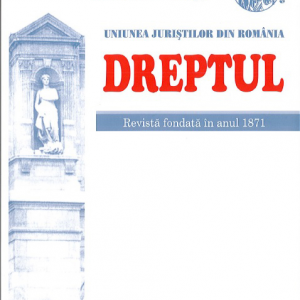 The regulation of the Civil Code on periodic ownership was preceded by the Law No 282/2002 and by the Government Emergency Ordinance No 14/2011, which have transposed the European Directives concerning consumer protection with regard to the utilisation or time-limited use of movable and immovable assets. As a legal modality of the ownership right, the characters of the periodic ownership, although qualified by Article 646 (1) of the Civil Code, which refers to Article 687 of the Civil Code, as a form of forced co-ownership, is delimited by it. The present study outlines these elements of difference, the specificity of periodic ownership as real right, the rights and obligations of the co-owners in the exercise of the prerogatives arising from this quality. Periodic ownership is a particular case of forced co-ownership, of a temporary nature, because several people successively and repetitively exercise the attribute of use, specific to the ownership right, over a movable or immovable asset, at fixed intervals of equal or unequal duration. This form of ownership implies an overlapping of the real right of each co-owner over the entire asset, but whose use is limited during one year to the duration indicated in the ownership title. The critical aspects concerning the relations between the co-owners are cantoned to the provisions of Article 691 (2) of the Civil Code on the sanction of excluding the co-owner who, through his conduct, causes to another co-owner a serious disturbance in the exercise of the prerogatives of the periodic ownership right.
The regulation of the Civil Code on periodic ownership was preceded by the Law No 282/2002 and by the Government Emergency Ordinance No 14/2011, which have transposed the European Directives concerning consumer protection with regard to the utilisation or time-limited use of movable and immovable assets. As a legal modality of the ownership right, the characters of the periodic ownership, although qualified by Article 646 (1) of the Civil Code, which refers to Article 687 of the Civil Code, as a form of forced co-ownership, is delimited by it. The present study outlines these elements of difference, the specificity of periodic ownership as real right, the rights and obligations of the co-owners in the exercise of the prerogatives arising from this quality. Periodic ownership is a particular case of forced co-ownership, of a temporary nature, because several people successively and repetitively exercise the attribute of use, specific to the ownership right, over a movable or immovable asset, at fixed intervals of equal or unequal duration. This form of ownership implies an overlapping of the real right of each co-owner over the entire asset, but whose use is limited during one year to the duration indicated in the ownership title. The critical aspects concerning the relations between the co-owners are cantoned to the provisions of Article 691 (2) of the Civil Code on the sanction of excluding the co-owner who, through his conduct, causes to another co-owner a serious disturbance in the exercise of the prerogatives of the periodic ownership right.
